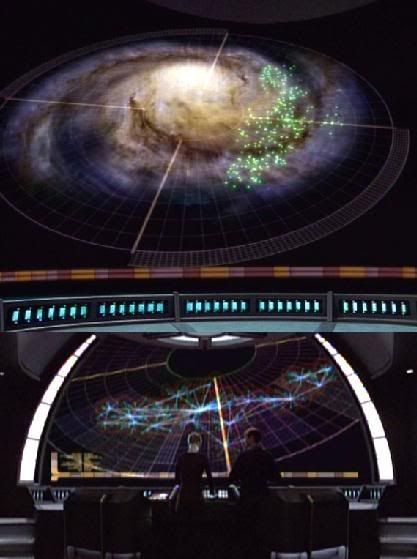Christopher said:
LCARS 24 said:
No, it's nonsense. A Starfleet vessel wouldn't be able to do that, even with some sort of enhanced warp drive. The galactic core is massive black hole. The real Voyager's course was a curved path just inside the outer rim of what you see in this image from Voyager's Astrometrics Lab.
Guy Gardener said:
I've read (fiction) which says the center of the galaxy is a vast stellar nursery. Which would explain why in that picture that the middle is yellow and not black.
Don't confuse the Central Bulge with the central black hole. The Bulge (which is actually now known to be bar-shaped) is over 20,000 light years across and contains about 90 percent of the stars in the galaxy. The central black hole (believed to be identified with the radio source Sagittarius A*) is far more compact, no more than 17 light-hours across, although it has thousands of stars clustered within a parsec of it. On the scale of the picture in LCARS 24's post, the central black hole would be invisibly small.
When Chakotay said the course would take them through "the center of the Milky Way," it would've been the Bulge that he was referring to. The stars would be pretty densely concentrated there, but not impassably so by a long shot. Within ten parsecs of the core, the stars would average maybe a tenth of a parsec apart, which is three trillion kilometers. Farther out, they'd be even less closely packed. A starship would have no trouble passing through the Bulge.



